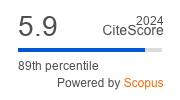Article | Open Access
The Evolution of Government Intervention in the Mediterranean Media System: Spain, France, and Portugal
| Views: | 2215 | | | Downloads: | 2305 |
Abstract: Based on the comparative analysis of the three Western media system models distinguished by Daniel Hallin and Paolo Mancini (2004), this article revisits their thesis of a tendency towards the convergence of the Mediterranean model and the Liberal model—in terms of the weakening of links between media institutions and the political sphere—two decades after it was first posited. By studying the degree and nature of state intervention in the media systems of Spain, France, and Portugal in the 21st century, the aim is to ascertain whether, within a context of growing political polarisation and shrinking journalistic industry income, the distinctive characteristics of the role of the state in the Mediterranean model remain the same or have changed—and in what sense. The contextualised analysis of Spanish, French, and Portuguese policies relating to public service media, independent audiovisual media regulatory bodies, media subsidies, and state advertising on the one hand allows us to question whether state intervention in Mediterranean media systems has weakened, thereby reaffirming the thesis of the importance of nation-states in media governance and the relevance of the comparative study of national media systems in the era of digital globalisation. And, on the other hand, it enables continuities, discontinuities, and differences between the three countries to be identified in relation to the logic of clientelism that Hallin and Mancini observed in their media policies in 2004, as well as some initial elements for their interpretation to be noted.
Keywords: France; media policies; media subsidies; media systems; public service media; Spain; Portugal
Published:
Issue:
Vol 12 (2024): Communication Policies and Media Systems: Revisiting Hallin and Mancini’s Model
© Ana Fernández-Viso, Isabel Fernández-Alonso. This is an open access article distributed under the terms of the Creative Commons Attribution 4.0 license (http://creativecommons.org/licenses/by/4.0), which permits any use, distribution, and reproduction of the work without further permission provided the original author(s) and source are credited.


